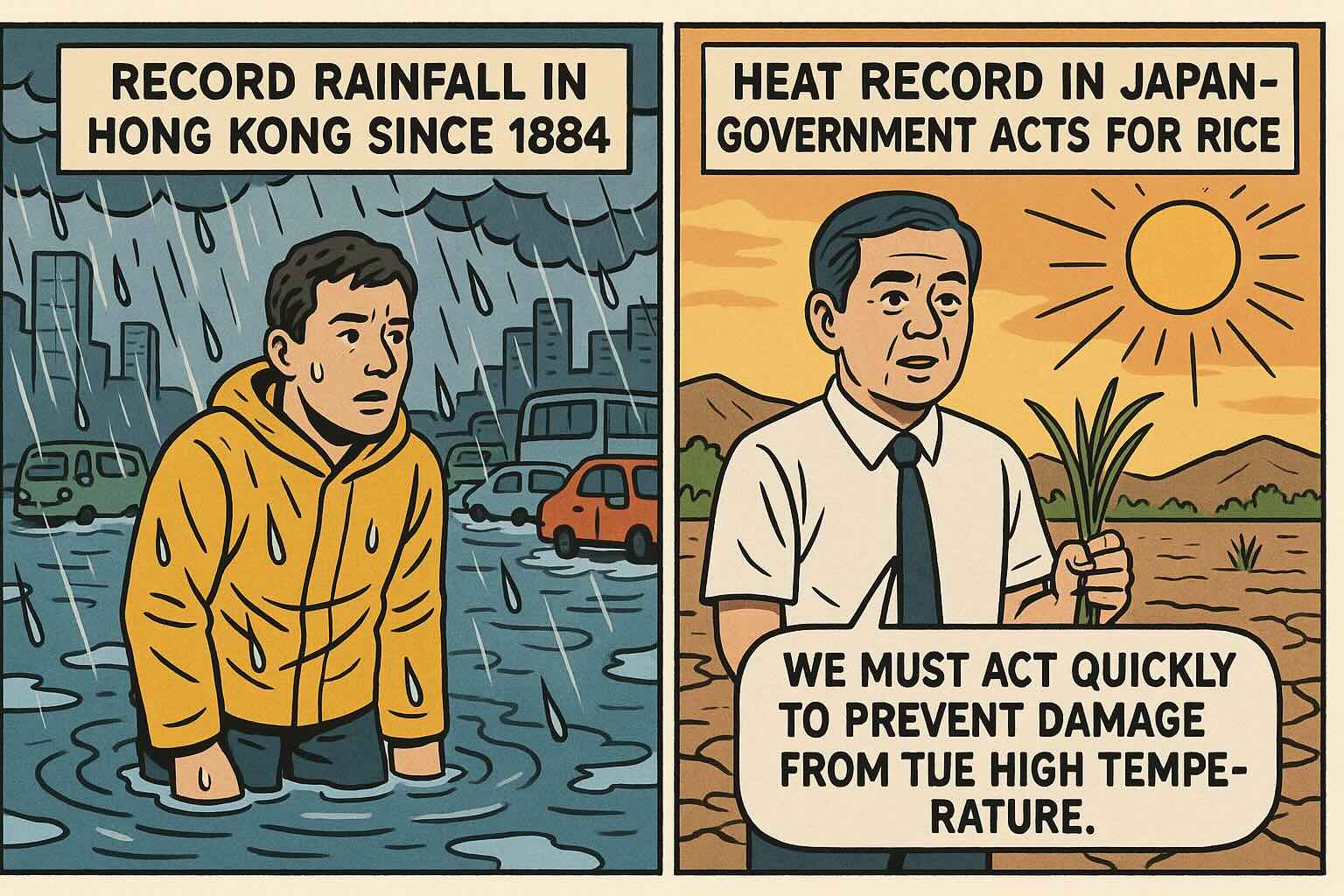
Date: 5 August 2025
Source: AFP, Reuters, Local Weather Authorities
Reading Time: 3 minutes
In just one week, Asia has faced two stark climate alarms:
Hong Kong saw its heaviest rainfall since 1884, triggering floods and landslides.
Japan registered its hottest day ever recorded, with temperatures soaring to 41.8°C, threatening its critical rice harvest.
These extreme events are not isolated. They are a reflection of a deeper trend and they force us to confront a critical question:
Are our cities truly prepared for a future shaped by climate change?
On Tuesday, 5 August, Hong Kong recorded 355.7 millimetres of rainfall by 2 p.m. local time the highest daily total in over 140 years.
The rain followed four black rainstorm warnings in just eight days, overwhelming infrastructure, delaying over 360 flights, and causing 13 reported landslides.
What stood out wasn't just the rain, but the frequency and intensity a clear sign of how fragile even the most developed cities can be in the face of extreme weather.
Meanwhile, in Japan, the temperature reached an all-time high of 41.8°C last Thursday, as reported by Reuters.
For the third July in a row, national average temperatures have risen. The heatwave has been accompanied by critically low rainfall, fuelling growing fears over damage to rice production a cultural and economic cornerstone in Japan.
The government has responded with urgency.
“We must act quickly to prevent damage from the high temperatures,” said Agriculture Minister Shinjiro Koizumi.
Policy measures are expected to be announced this week to safeguard rice fields and stabilise supply.
These two events separated by geography but united by climate stress paint a sobering picture:
Weather records are no longer rare. They're now yearly, even monthly occurrences.
Food security is not a rural issue anymore. It begins and ends in climate-stable urban systems.
City life is fragile when water systems, transport, and agriculture are all pushed to the limit.
This is not just about inconvenience it’s about long-term urban survival.
Most cities still operate on 20th-century infrastructure, designed for weather patterns that no longer exist.
🟠 Drainage systems can’t keep up with rainfall intensity
🟠 Power grids buckle under heatwaves
🟠 Urban planning lags behind climate modelling
🟠 National food systems are increasingly exposed
We now need to redefine what a “great city” means. It’s not just about tech, transport, or skyline. It’s about resilience.
Climate resilience is the new urban metric.
And also discover how your city ranks at BestCityIndex.com.
Author
Sammy Salmela is a contributor to BestCityIndex with expertise in urban development and global city trends.
Stay updated with our latest insights and city rankings.

Introduction:The aroma of aged wheels, bubbling fondue, and freshly baked bread for cheese lovers, Europe is a true paradise. Here are five cities where cheese...

Moving to Europe: Pros and Cons by Country for Work, Retirement, Education & Lifestyle Part 1.Moving from the United States to Europe is an exciting...

Date: 29 July 2025Estimated reading time: 6 minutesIntroductionPopulation: ~8,800 (Chamonix town) | ~15,000 (wider valley)Tucked beneath the mighty Mont Blanc,...

